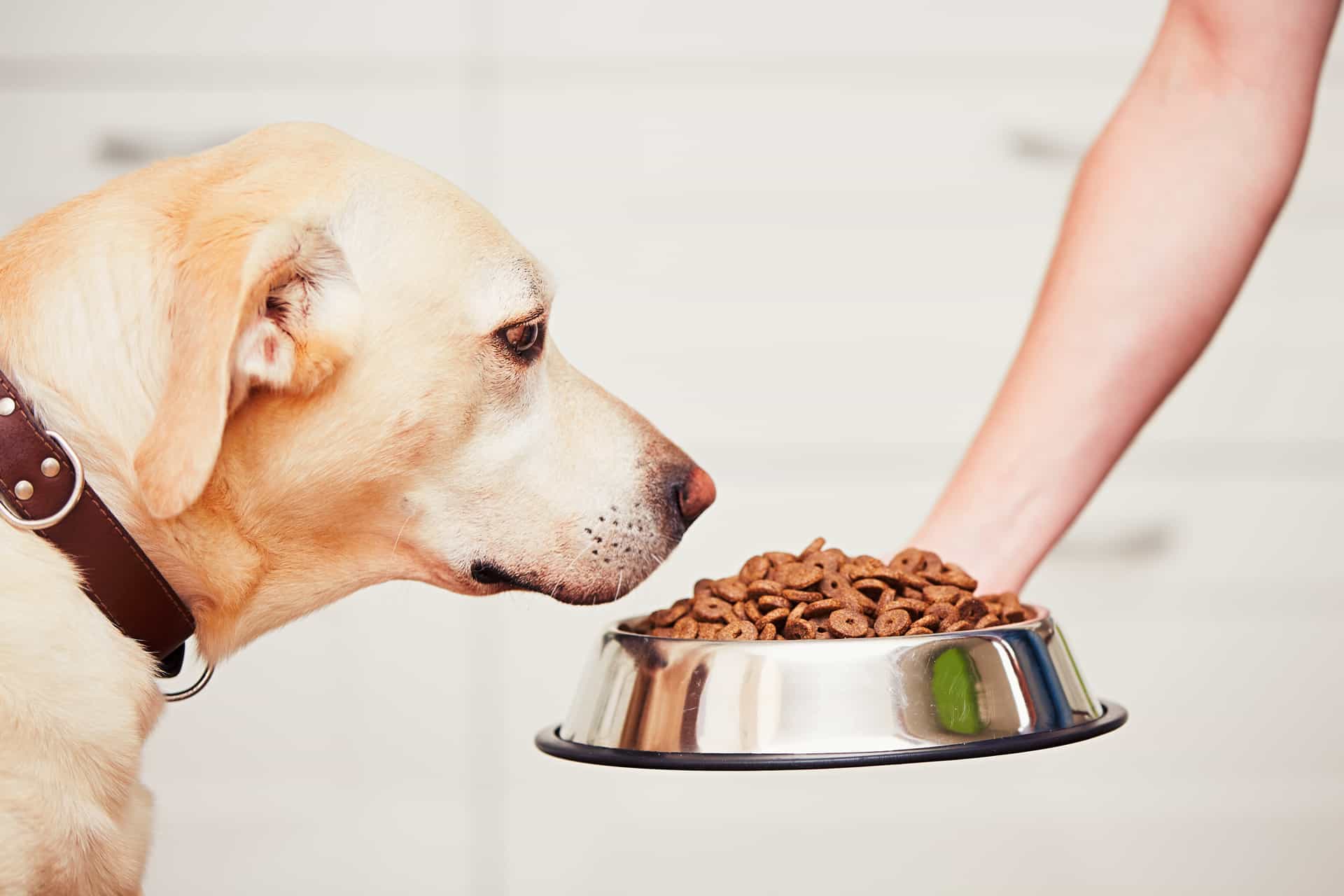Decoding Dog Food Labels: A Guide to Choosing the Right Food
Choosing the right food for your pup can be complicated. To make sure your pup is getting the nutrients they need, understanding labels is key. Here’s a guide to help you decode dog food labels:
- Look for the statement of nutritional adequacy. This certifies the food is complete and balanced.
- Check the ingredient list for whole food sources of protein like chicken, lamb, or fish.
- Stay away from meat by-products, animal fat, and artificial preservatives and colors.
- Consider your pup’s age, breed, and size. Pick a food that fits their needs.
- Pay attention to the feeding instructions. Adjust portion sizes for a healthy weight.
- Trying out different foods may be necessary. Labels can help you pick the best one for your pup.
Understanding the Ingredients
Check the ingredients list of your pup’s food! It’s key to making sure they get the right nutrition. Scan the dog food contents to see what nutrition they’re getting.
To understand the ingredients better, you must know what to look for. Use this guide to crack the dog food labels code!
Identifying the main ingredient(s)
Confused about dog food labels? It’s not too hard to understand. Look for the first ingredient – it should be a high-quality protein, like chicken or lamb.
If your pup has allergies or sensitivities, check for potential allergens like wheat or soy.
Also, steer clear of foods with fillers or byproducts as the main ingredient. These are low in nutrition and can cause harm.
Pro Tip: Talk to your vet before making changes to your dog’s diet – or if you have any concerns.
Decoding by-products, meal, and meat
Selecting dog food requires knowledge of the label terms, like by-products, meal and meat.
By-products are non-meat parts, such as organs, bones and cartilage. People may think low quality, but by-products provide nutrition.
Meat meal is a concentrated protein source made by removing water and fat from meat. It can come from many animals and is a high-quality ingredient.
Meat is an ingredient too, but less concentrated and includes water weight, making it lower-quality.
It’s vital to note: Quality and proportions matter more than the terms on the label. So, look for a balance of sources in the ingredients list.
Understanding grains and fillers
Dog food labels can be tricky. Here’s a guide to help you understand the common ingredients.
Grains are used for carbs. Look for whole grains like brown rice and barley. These provide fiber and nutrients.
Fillers are added to increase the volume. Common fillers are corn, wheat, and soy. Some of these can cause digestive issues. Choose foods with good ingredients that prioritize your dog’s health.
Always check the label to make sure it has high-quality, nutrient-dense ingredients. These should meet your pup’s dietary needs.
Nutritional Adequacy
Nutrition should be the key focus when choosing a dog food. Research the label to spot the Association of American Feed Control Officials (AAFCO) statement. This will tell you if the food is complete and balanced. Plus, it’ll list the dog’s life stage it’s designed for. Not all labels have this. So, ensure you do your research.
Understanding the AAFCO statement
The AAFCO statement on dog food labels shows if the food meets the standards set by the Association of American Feed Control Officials. It’s essential to know this to choose the best food for your dog’s nutrition.
So, what should you look for? The statement should tell the life stage the food is made for, like “for all life stages” or “for adult maintenance”.
It should also mention the method used to test the food’s nutritional value, such as “feeding trials” or “formulation method”.
If the food meets the AAFCO standards, the statement will say something like, “Animal feeding tests using AAFCO procedures prove this product has complete and balanced nutrition for [life stage]”.
This info will help you make the right choice for your pup’s requirements.
Analyzing Guaranteed Analyses
When picking pet food, it’s key to understand the guaranteed analysis on the label. To do that, you must know minimums, maximums, and percentages.
- Minimums are the least amount of each nutrient needed to meet your pup’s needs.
- Maximums are the most of a certain nutrient allowable before it is harmful.
- Percentages show the proportion of that nutrient in the food by weight.
Knowing these will help you make a wise choice for your four-legged friend.
Checking for live probiotics and enzymes
Checking labels for live probiotics and enzymes is an important step when selecting the ideal food for your beloved pup. These probiotics and enzymes are beneficial bacteria and digestive enzymes that can improve your pup’s digestion, immunity, and overall health.
When reading a dog food label:
- Look for probiotics like lactobacillus, bifidobacterium, and enterococcus. They should be listed by their scientific names.
- Also look for enzymes like protease, amylase, and lipase. These help break down proteins, carbs, and fats in the food.
- Choose dog food brands with high-quality ingredients and no artificial additives. These can kill helpful bacteria and enzymes.
Adding probiotic or enzyme supplements to your pup’s diet can be helpful, but get your vet’s approval first.
Types of Dog Food
Puzzled by dog food labels? No worries! There are four main types of food for your pup: dry (kibble), semi-moist, wet canned and raw. Let us explore the distinctions between them.
Examing Wet/Canned Dog Food
Wet or canned dog food is a popular choice for pet parents. It’s convenient and has high moisture levels. But, it’s important to look at the label. Here’s what to check:
- Ingredients: Look for real meat or fish as the first ingredient. Avoid fillers like wheat or corn. Choose a food that meets your dog’s needs.
- Guaranteed Analysis: Check the minimum and maximum levels of protein, fat, fiber and moisture. Make sure the values suit your dog’s requirements.
- Feeding Guidelines: Follow the recommended guidelines based on your dog’s weight and activity. Adjust as needed.
- AAFCO Statement: This confirms the food meets the nutritional standards set by the Association of American Feed Control Officials.
By understanding these labels, you can make sure your pup gets the right nutrition.
Understanding Dry Dog Food
Dry dog food is a popular choice for pet owners. Knowing the different types of dry dog food and how to read their labels can assist you in selecting the correct food for your furry friend’s health and dietary requirements.
Here are the common types of dry dog food:
- Kibble: Most widely used. It is composed of dried kernels made from a blend of meat, grains, and vegetables.
- Freeze-dried: These foods are created from fresh food that is cooked, then freeze-dried to take away all the moisture. They come in small, lightweight packages that are great for travelling.
- Dehydrated: Dehydrated dog foods are made by removing all the moisture from the food. They are typically made from high-quality meats, veggies, and fruits.
To decode dog food labels, these tips should be followed:
- Look for whole ingredients at the top of the list.
- Stay away from foods that contain fillers, by-products or artificial preservatives.
- Pick a food that is appropriate for your pup’s age, size, and health conditions.
Breaking down Semi-Moist Dog Food
Semi-moist dog food has a moisture content of 20-65%. It’s between dry kibble and wet canned food in texture. It needs special storage to keep fresh. Here’s what you should know about semi-moist dog food:
- Ingredient quality: Look for proteins as the first ingredient. Avoid additives and artificial colors.
- Moisture content: Enough moisture to be eaten alone. But, shorter lifespan than dry kibble. Store properly.
- Nutritional value: Fewer nutrients than dry kibble but more than canned wet food.
- Pro tip: Check labels and ingredients list before buying. Store in airtight container in fridge or pantry.
Special Diet Options
Choosing the right food for your pup? Watch out for any dietary needs! Certain pooches may require something special due to medical issues or allergies. Research the options available for your pup’s diet.
In this article, we’ll talk about special diet choices you may have to consider.
Exploring grain-free and gluten-free dog food
Grain- and gluten-free dog food is getting more and more common for pet owners who want to give their furry pals something special. But figuring out dog food labels can be tough. Here’s a guide to help:
- Look for a named protein source like chicken, lamb, or salmon as the top ingredient. Don’t go for vague things like “meat” or “animal by-product.”
- Check if grains or gluten can be replaced with carbohydrates like sweet potatoes, peas, or lentils.
- Steer clear of artificial preservatives, colors, and additives like BHA or BHT.
- See if the dog food fulfills AAFCO (Association of American Feed Control Officials) standards for complete and balanced nutrition.
- Consult your vet to establish if a grain-free or gluten-free diet fits your pet’s needs.
Pro tip: Balanced nutrition is more important than trendy diets when it comes to your pup’s meals.
Recognizing Limited Ingredient Diet(LID)
Does your pup have food allergies or sensitivities? A Limited Ingredient Diet (LID) could be the perfect choice! It only has a few ingredients, like a protein source and select carbs.
Look for LID dog food brands with a short ingredient list that’s easy to understand. Lamb, duck, sweet potato, peas, and chickpeas are common.
Remember: LID diets may not suit all dogs. Ask your vet before switching food.
Pro tip: Read the label to make sure you know what’s in the food. Avoid fillers, by-products, and artificial additives. They can cause digestive issues and other health problems.
Examining Weight Management Dog Food
When studying weight management dog food, pet owners can feel rather daunted. Especially when trying to interpret labels and pick the right food for their pet’s particular dietary needs.
Here are the main points to consider when looking at weight management dog food labels:
- Protein Content: Look for a minimum of 25-30% protein, to keep muscles strong and support weight loss.
- Fat Content: Opt for food with moderate fat (less than 15%), from sources like fish oil.
- Fiber Content: Aim for 5-10% fiber to aid digestion and keep your dog feeling full for longer.
- Calorie Density: Make sure the calorie density helps your dog reach their ideal body condition score.
Pro Tip: Speak to your vet before making any big changes to your pet’s diet – especially if they have medical conditions.
Additional Factors to Consider
When picking out the right food for your pup, there are more things to think about than just the ingredients and brand. Look for the AAFCO nutritional adequacy statement. Check out where it is manufactured. See what the recall history of the brand is. Let’s take a look at other factors to consider.
Identifying age-specific dog food
It’s vital to pick the right food for your pup’s age. Here’s a fast guide to make selection easier:
For Puppies:
Look for “puppy formula,” “for growth,” or “all life stages” labels. These hold high amounts of protein and fat to help growth.
For Adult Dogs:
Go for “maintenance,” “active,” or “reduced calorie” labels. This provides a well-balanced diet for dogs at the right weight.
For Senior Dogs:
Choose “senior formula” or “mature dogs” labels. These have reduced calories, protein, and fat that’s gentle on aging digestive systems and supports joints.
Take your pup’s breed size, activity level, and dietary restrictions into consideration. Read labels carefully and talk to your vet to make the best decision for your pup.
Recognizing breed-specific dog food
Choosing dog food is vital for your pet’s health. Think about breed-specific dietary needs when selecting. Here are tips to recognize the right type of dog food:
- Check the ingredients. Some breeds may be allergic to certain ones, like grains or chicken.
- Look for protein sources. Working and athletic breeds may need higher levels of protein.
- Age and size. Smaller breeds and puppies may have different nutritional requirements.
- Consult your vet to determine the best food for your breed and pet. A high-quality diet can help your dog live longer and healthier.
Examining organic and natural dog food
It’s essential to examine more than just the label claims when looking for organic and natural dog food. Decoding dog food labels can help you pick the right food for your pet. Consider these points:
- Look for an AAFCO statement. The Association of American Feed Control Officials (AAFCO) provides advice on pet food ingredients and labels. Check if the label indicates the food is up to nutritional standards.
- Check protein and fat content. Dogs need a balanced diet to support their activity and growth. Look for dog food with quality sources of protein and reasonable levels of fat.
- Avoid fillers and by-products. Fillers like corn and wheat have little nutritional value and can cause digestive issues. By-products like chicken beaks or feet are low-quality proteins.
Examining ingredient labels and selecting a top-notch dog food is vital for your pet’s health. Consult with your vet if you have doubts about your dog’s diet. Pro tip: When switching to a new food, gradually mix it in over a few days to prevent digestive issues.
Frequently Asked Questions
Q: What should I look for when reading dog food labels?
A: When reading dog food labels, look for the first ingredient to be a high-quality protein source, such as chicken, beef, or fish. Avoid foods with by-products, fillers, and artificial colors and preservatives.
Q: Will choosing a more expensive dog food always be better for my pet’s health?
A: Not necessarily. While some more expensive dog foods may have higher-quality ingredients, it’s important to read the label and make sure the food meets your pet’s specific nutritional needs.
Q: Can certain ingredients in dog food cause allergies or other health problems?
A: Yes, some common ingredients in dog food, such as corn, wheat, and soy, can cause allergies or digestive issues in some dogs. Consult with your veterinarian if you suspect your pet has a food sensitivity.
Q: What is the difference between “organic” and “natural” dog food?
A: Organic dog food is made with ingredients that are grown without the use of synthetic fertilizers or pesticides. Natural dog food may contain organic ingredients, but the term “natural” is not regulated and can be used on products that contain some synthetic ingredients.
Q: How can I tell if a dog food is nutritionally complete and balanced?
A: Look for the Association of American Feed Control Officials (AAFCO) statement on the label, which indicates that the food meets minimum nutrition standards. You can also consult with your veterinarian to determine the best food for your pet.
Q: Should I switch my dog’s food if I notice a change in their health or activity level?
A: It’s important to consult with your veterinarian before making any changes to your pet’s diet. Your vet can help determine if a change in diet is necessary and recommend the best food for your pet’s specific needs.







